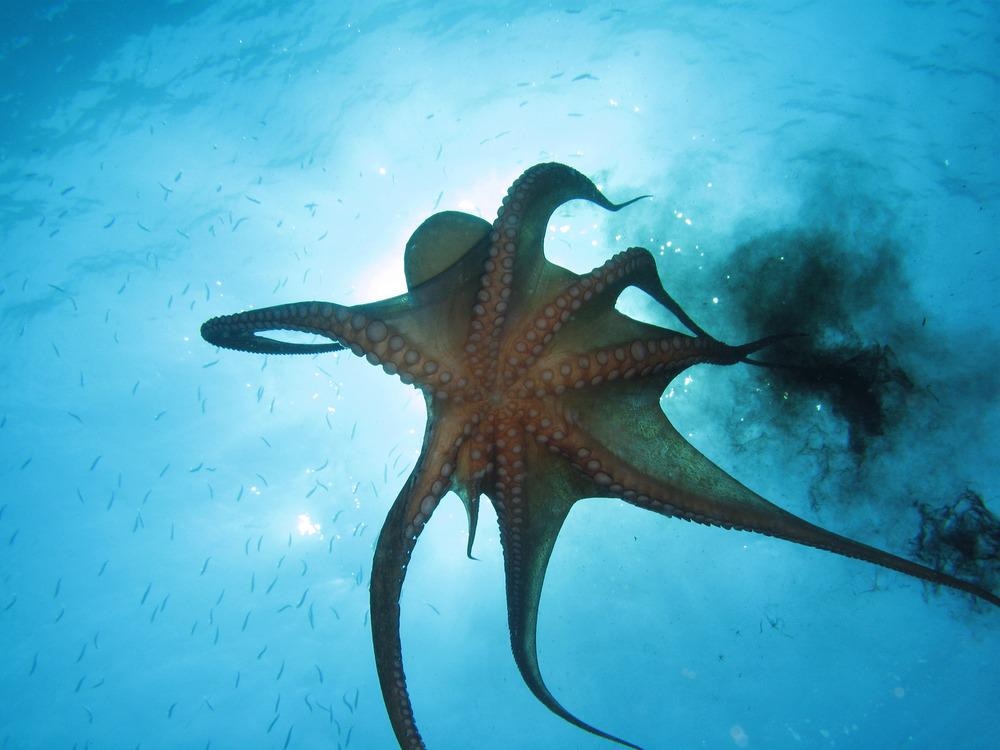This article considers the use of analytical techniques for food traceability. Specifically, new research has considered the elemental analysis of octopus ink as a means of testing the regional validity of seafood.

Image Credit: Vittorio Bruno/Shutterstock.com
Consumption of Seafood
Seafood is an important part of human nutrition and makes up some of the most marketed culinary products in the world, with an ever-increasing demand. On a worldwide basis, typical seafood consumption accounts for around 16.7 percent of animal protein consumption per person. Cephalopods, such as the typical octopus (Octopus Vulgaris), are preferred among seafood items because they are readily accessible globally and are a lean protein source with a high protein/fat ratio.
Importance of Seafood Traceability
Mislabeling, whether inadvertent or to benefit from unlawful acts, is typically connected with high-demand items. To combat rising food fraud, the European Union (EU) has adopted a resolution requiring all member countries to formulate and maintain measures to improve seafood traceability and avoid misidentification.
Traceability is defined in this EU legislation as a means for establishing and tracing any food product throughout all stages of manufacture, processing, and distribution. Certain techniques adopted in this regard include DNA barcoding, elemental analysis, and fatty acid profiling.
Elemental Concentration Results of Octopus Ink
The common octopus has been used for analysis by Mr. Duarte and his team in their latest research published in the Journal of Food Composition and Analysis. Calcium was abundantly present in all ink samples collected from octopus species in different areas. Similarly, potassium was also present in all samples in identical concentrations.
The ink secreted by octopus species in northern areas, however, contained considerable amounts of sodium compared to those in southern areas. Centre-North and Centre-South octopi secreted ink containing a scarce amount of bromine. In addition, arsenic (As) content increased significantly from north to south. When the heterogeneity percentages were calculated, Pb and Rb had the highest concentrations, followed by Ni, Se, and K; while, Mn, Cr, and Fe had the lowest concentrations.
Traceability Findings and Results Discussion
Even though food sources and animal biology play significant roles in determining the elemental description, the chemical compositions of aquatic animal body tissue are inherently connected to the chemical makeup of the external environment. Because of the existence of several organic compounds that impart good compatibility for cationic ions, eumelanin granules, which are plentiful in octopus ink, are the primary aspect responsible for trace element buildup. The existence of this natural dye makes it very appealing for gastronomy-specific purposes, but it also makes it a potential contamination vector for consumers because it behaves as a metal reservoir/sink, governing mineral storage and discharge as well as separating dangerous metals that induce oxidative stress.
As no absolute criteria for direct consumption for arsenic concentrations in seafood have been defined, no conclusion on its safety can be drawn at this time, despite the high amounts reported in samples. However, it should be emphasized that human ingestion of octopus ink is suggested to be limited in quantity, and usually requires neutralization during preparation.
Although the ink is eliminated in treated (gutted) octopus products, it is a suitable foundation for seafood traceability. It is not regularly devoured, which is favorable in contrast to tentacle striated muscle, and specimen collection and processing is easier than with statoliths. Furthermore, most seafood traceability studies are based on focused analytical methods, such as inductively coupled plasma-based mass spectrometry (ICP-MS), which primarily rely on the operator's specialized knowledge for the identification of the components to be studied.
Future of Seafood Traceability
Apart from the utilization of octopus inks, researchers are focused on developing more generic technologies and methods for tracing any sort of food. An article by researchers was published in Reviews in Fish Biology and Fisheries in which the researchers utilized a DNA signature technique in conjunction with stable isotope signature monitoring for tracing the point of origin of seafood.
While DNA-based technologies have been shown to be successful in determining the validity of seafood in species identification, determining geographic origin remains fundamentally more difficult. With varying degrees of effectiveness, both genomic and stable isotope studies have been used to determine point-of-origin, demonstrating that their use may be beneficial when the proper technique is chosen for a certain application.
In short, a thorough process and technique to pave out the geographical origin of seafood products is necessary and is a viable research topic for individuals interested in fisheries and marine biology.
More from AZoM: How to Automate Sorting in Food Production
References and Further Reading
Duarte, Bernardo, et al. 2022. Written in ink: elemental signatures in Octopus ink successfully trace geographical origin. Journal of Food Composition and Analysis. 104479. Available at: https://doi.org/10.1016/j.jfca.2022.104479
Ramasubramaniam, M., and A. Karthiayani. 2022. Traceability Systems and Technologies for Sustainability in Food Supply Chains. Lean and Green Manufacturing. Springer. Singapore. 103-120. Available at: https://doi.org/10.1007/978-981-16-5551-7_6
Martino, Jasmin C., et al. 2022. Tracking the provenance of octopus using isotopic and multi-elemental analysis. Food Chemistry 371. 131133. Available at: https://doi.org/10.1016/j.foodchem.2021.131133
Cusa, M., St John Glew, K., Trueman, C. et al. 2021. A future for seafood point-of-origin testing using DNA and stable isotope signatures. Rev Fish Biol Fisheries. Available at: https://doi.org/10.1007/s11160-021-09680-w
Davis, Robert P., Claude E. Boyd, and Donald Allen Davis. 2021. The utility of discriminant analysis to determine the geographic origin of commercially important seafood and aquaculture species: a meta-analysis. Reviews in Fisheries Science & Aquaculture 29(4). 791-799. Available at: https://doi.org/10.1080/23308249.2021.1882935
Disclaimer: The views expressed here are those of the author expressed in their private capacity and do not necessarily represent the views of AZoM.com Limited T/A AZoNetwork the owner and operator of this website. This disclaimer forms part of the Terms and conditions of use of this website.